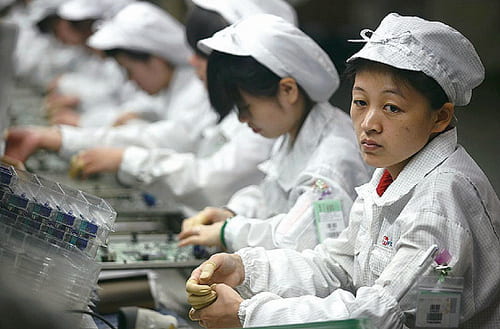Originally published on September 22, 2014
This week the UN will convene a climate summit where Secretary General Ban Ki Moon will ask leaders to bring “bold announcements and actions that will reduce emissions, strengthen climate resilience, and mobilize political will for a meaningful legal agreement in 2015.”
For those who have marched in cities around the world this weekend demanding change, the Summit offers a new opportunity to finally set the world on a corrective path that will avert an imminent global disaster. This summit follows on the heels of previous UN conferences in Copenhagen, Cancun, Durban, and Doha, each of which had ambitious goals but which failed to prompt world leaders towards substantive action. Frustration and disappointment has become the norm. As Felipe Calderon, chairman of the Global Commission on the Economy and Climate said, “If the evidence is so clear, why have we not acted?”
This summit has little chance for success. Even if it did result in some agreement by leaders, the eventual successful implementation would be extremely unlikely. The simple reason is that the world is severely addicted to fossil fuels and because of that, even the recognition and acceptance of the problem is simply not sufficient to inspire coordinated action.
A convincing argument can be made using an analogy between an individual’s addiction to cigarettes and fossil fuel usage by society.[1] Smoking is commonly recognized as an addiction and it is important to note that smoking exhibits a similar pattern of costs and benefits over time as fossil fuel usage. Both cigarette and fossil fuel consumption generates immediate benefits to users; smoking causes the seductive effect of nicotine in the brain and social camaraderie among peers; fossil fuels provide affordable energy for transportation, heating and electrical needs – it is a part of everyone’s daily life. Both smoking and fossil fuels have the potential to cause long term damage in the future: with smoking comes the higher incidence of cancer, heart disease, and emphysema; with fossil fuels comes the potentially deleterious effects of super storms, droughts, and rising sea levels caused by climate change. Finally, both smoking and fossil fuel usage are difficult and costly to discontinue: smoking cessation causes sometimes severe withdrawal costs and continual urges for resumption; fossil fuel substitution requires costly replacements of energy systems and higher energy costs. In addition, the future effects of both smoking and fossil fuel usage are uncertain. Smoking does raise the probability of contracting a disease, but, as many as 50% of smokers never experience these negative effects. Fossil fuel consumption may certainly be raising global temperatures, but knowledge of who will be affected, to what degree, and when, remains speculative at best.
It is the presence of withdrawal costs that makes smoking addictive. Because it is painful for smokers to quit, even those with full understanding of the potentially detrimental future effects, can become trapped in their current habits and smoke until it kills them. Similarly, high relative costs of energy substitutes will also make it difficult to kick the fossil fuel habit as well.
Consider the campaign aimed at breaking the addiction to smoking, which began in earnest after the 1964 US Surgeon Generals report. Since then, anti smoking groups have initiated educational campaigns, advertising bans, higher taxes, and successful litigation against cigarette companies. The efforts were a success with a substantial reduction in adult smoking rates in the US from over 40% in the 1960s to around 20% today.
In the early stages though, resistance to change was strong and many people simply denied that smoking was harmful. Today the vast majority of people, including smokers themselves, accept the dangers posed by smoking. Still, despite that knowledge, it may seem somewhat surprising that fully one-fifth of the US adult population continues to smoke. If we consider smoking around the world, noting that many similar regulatory programs and high taxes have been imposed in Europe and elsewhere, it is surprising that as much as 30% of the adult male population continues to smoke. Thus, despite many successes over more than a 50-year campaign, it has been grudgingly difficult to break peoples’ addiction to cigarettes.
Now consider fossil fuel usage. As described above, fossil fuel usage displays a similar pattern of costs and benefits over time as cigarettes and thus can be thought of as an addictive process. However, fossil fuel usage is different from smoking in an important respect that will make breaking this addiction many times more difficult.
To curtail smoking one has to convince an individual to change his or her behavior in order to have a long term positive effect directly upon him or herself. In contrast, with fossil fuels one must convince billions of people to change their behaviors in order to have a positive impact on future generations of people. Individual action on fossil fuel usage will have no meaningful impact on the future outcome for oneself, or the world. In fact, even if hundreds of millions of individuals in several large countries change their fossil fuel usage it will still have little effect on climate change if the rest of earth’s population maintains its current habits. This means that climate change mitigation is a collective action problem, on top of being an addictive process, and this is the reason the UN is convening regular summits to reach a collective agreement.
But while collective action can work when the benefits of the actions will have immediate positive impacts, it is unlikely to work when the benefits are highly uncertain and in the distant future. Also, although world leaders may pay lip service to climate change mitigation and even implement policies to prompt modest reductions in fossil fuel use, significant reductions in carbon emissions in democratic countries will ultimately require the support by a majority of the national electorates. With respect to smoking abatement policies, such as higher taxes and strict regulations, the majority of the population are non-smokers who are perfectly willing to support such restrictive policies. In addition, the cigarette industry is a very small sector relative to the size of the entire economy so legal attacks against it provoked little resistance. In contrast, policies to restrict fossil fuel usage and carbon emissions will affect 100% of the world’s population and impact industries that are the largest companies in the world employing tens of millions of people. The supply chains for fossil fuels and the profits that flow from them are well understood and both directly and indirectly benefit everyone on the planet. Attempts to break these fossil fuel “habits” will be met with an indefatigable resistance that will include continuing propagation of climate change denials and intense lobbying against any policy change that threatens these well-established patterns. For these reasons, UN summits have virtually no chance for success. It won’t matter how many meetings are held or how many marches take place.
All hope need not be lost though. There are several viable alternatives to collective action. However, one of these alternatives faces high uncertainty regarding its potential effectiveness. And although the second option has high potential to be effective, it faces substantial resistance even from those most concerned about climate change.
The first option is a concentrated effort to reduce the cost of switching to low carbon alternative energy sources such as solar, wind and nuclear. If alternatives can satisfy consumer energy demands at a lower cost, then consumers will surely demand them. However, one additional requirement for this to work is that energy companies must be able to make greater profit supplying these alternatives than they can supplying fossil fuels. Only in this way will there be a rapid changeover sufficient to crowd out fossil fuel usage. Whether low cost and highly profitable alternatives can be found quickly enough is highly uncertain.
The second possible solution is to use geo-engineering efforts to directly offset the greenhouse gas effect caused by rising carbon dioxide levels. Several potentially viable options have been proposed including carbon capture methods and use of atmospheric reflective materials, which could be implemented at a relatively modest cost. However, despite the fact that it was scientific discoveries that have motivated the demand for fossil fuels during the past two centuries in the first place, people nevertheless resist the application of science to mitigate the negative effects that are resulting from its use. Even if one accepts that there is a scientific consensus of the anthropogenic effects on climate change, that consensus does not imply that the only way to solve the problem is by forcing the reduction in fossil fuel use.
For these reasons the world would do well to abandon its efforts to reach climate change agreements. These efforts will be fruitless and are likely to result in rising hostilities as climate policy advocates increasingly chastise world leaders for their inaction while demonizing the oil, coal and gas companies who are simply delivering the world’s energy needs in the most habitually, efficient way. The more effective approach is to use science to solve the problem caused by science. Better to pour collective efforts into the development of viable and profitable non-carbon energy sources and in the event that does not succeed, to be ready to act with effective science-based interventions that can help regulate and control the earth’s climate.
[1] For a more complete analysis see Suranovic, Steven (2013), “Fossil Fuel Addiction and the Implications for Climate Change Policy,” Global Environmental Change, 23(3) 598-608.







